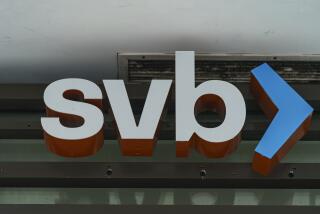Plan for Market Circuit Breakers Draws Criticism : Reforms Win Support but Concern Is Voiced on Issue of When to Halt Trading
- Share via
NEW YORK — The package of market reforms proposed this week by two leading stock and futures exchanges is winning expressions of general support from the investment world--along with many pointed criticisms of its plan to impose “circuit breakers” that would temporarily halt trading in plunging markets.
The package, jointly proposed by the New York Stock Exchange and the Chicago Mercantile Exchange, represents the most significant reforms since the October crash frightened part-time investors and pros alike. A key ingredient is the circuit-breaker plan, which, among other things, would halt trading in both exchanges for one hour if the Dow Jones industrial index fell 250 points and for two hours if the Dow fell 400 points.
The halts are intended to interrupt the cascade of selling by traders in the closely related stock and stock index futures markets during a dramatic market fall. By doing so, the halts would allow the dissemination of information on trading and give investors time to calculate their next moves. The two exchanges intend to try out the circuit breakers in a one-year experiment if they win approval from regulators and other U.S. stock and futures markets.
Markets’ Link Recognized
But some critics said the halts should be imposed sooner in a fall to have any effect, while others contended halts only frighten investors with the thought that they won’t be able to sell their stocks before the prices drop further.
Like others, Jeffrey B. Lane, president of the Shearson Lehman Hutton brokerage firm, hailed the two often-rivalrous exchanges for formulating a program that recognizes the two markets are now intimately linked.
But in his view, the exchanges should not wait until the Dow has dropped 250 points to halt the fall. “We’re waiting till (the market’s) broken, then we’re setting out to fix it,” he said. The Dow fell 508 points on Oct. 19.
Jack Barbanel, head of futures trading at Gruntal & Co. in New York, said the shutdowns of the Merc and the Hong Kong Stock Exchange during last October’s crisis illustrate how such moves can worsen a panic. In both exchanges, prices fell even more swiftly after they were reopened because of investor fears, he said.
Likely to Hit Obstacle
Market professionals said that once a market is closed, a huge backlog of orders is likely to build up, including bids and offers at a variety of prices. Such a backlog makes it extremely difficult to calculate at what price trading should be resumed, without leaving some traders to feel they have been treated unfairly.
The two exchanges’ proposal seems likely to meet a significant obstacle in the objections of one group, the National Assn. of Securities Dealers, which supervises an over-the-counter market.
Joseph Hardiman, NASD president, said the organization’s board of directors has “overwhelmingly” voted down proposals to support the circuit-breaker idea in March and May. “I don’t see any sign that they feel differently about it today,” he said.
A spokesman for the New York Stock Exchange said Big Board officials recognize circuit breakers “may not be the perfect answer to everything.” She noted that the circuit-breaker plan specifies when trading is to resume, which she said offers certainty that would help allay investor fears.
Robert G. Kirby, chairman of Capital Guardian Trust Co. in Los Angeles and a member of the presidentially appointed study group that first proposed such circuit breakers, said setting the first trading halt at a 250-point fall made the provision “tokenism.”
But he said other provisions of the program would be effective, including the proposal to publicly identify the “program traders” whose massive, computer-directed buying and selling of stocks and futures has been blamed by some for the collapse. Such public identification would discourage program trading, Kirby said.
Kirby said he had almost given up hope of any market reform, but was “surprised and delighted” to hear of the initiatives. “I had to go lie down for a minute when I read the paper this morning,” he joked.
The reform package also includes a new system for handling electronic buy and sell orders that is intended to help small investors in turbulent markets.
More to Read
Inside the business of entertainment
The Wide Shot brings you news, analysis and insights on everything from streaming wars to production — and what it all means for the future.
You may occasionally receive promotional content from the Los Angeles Times.









